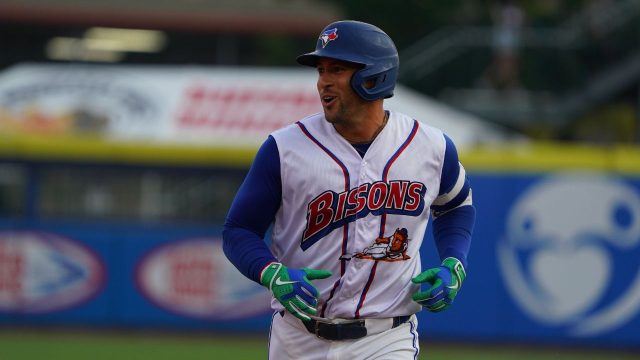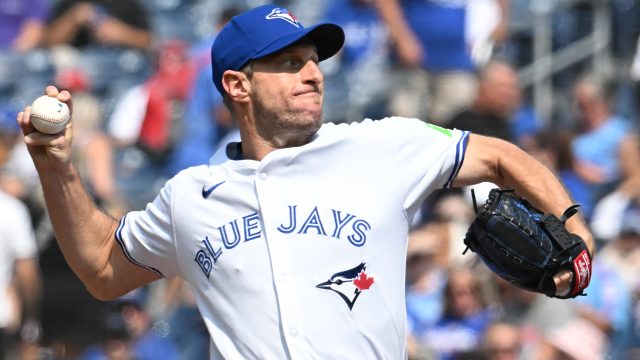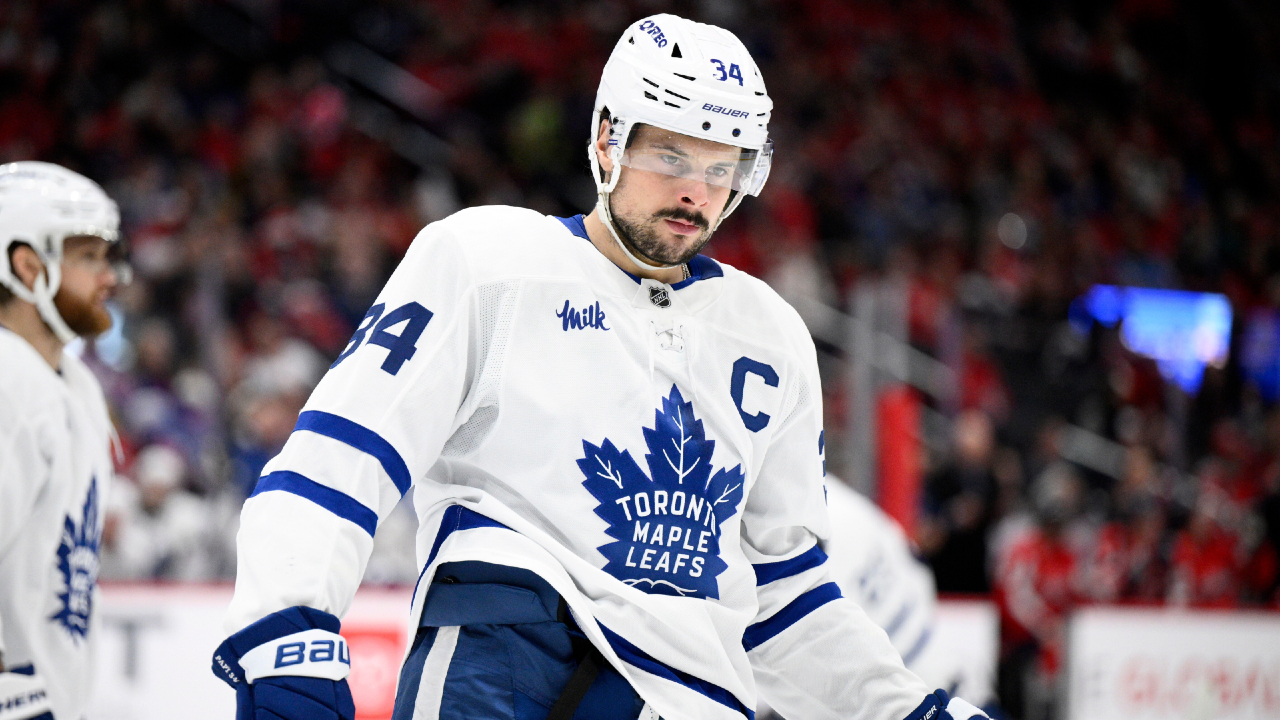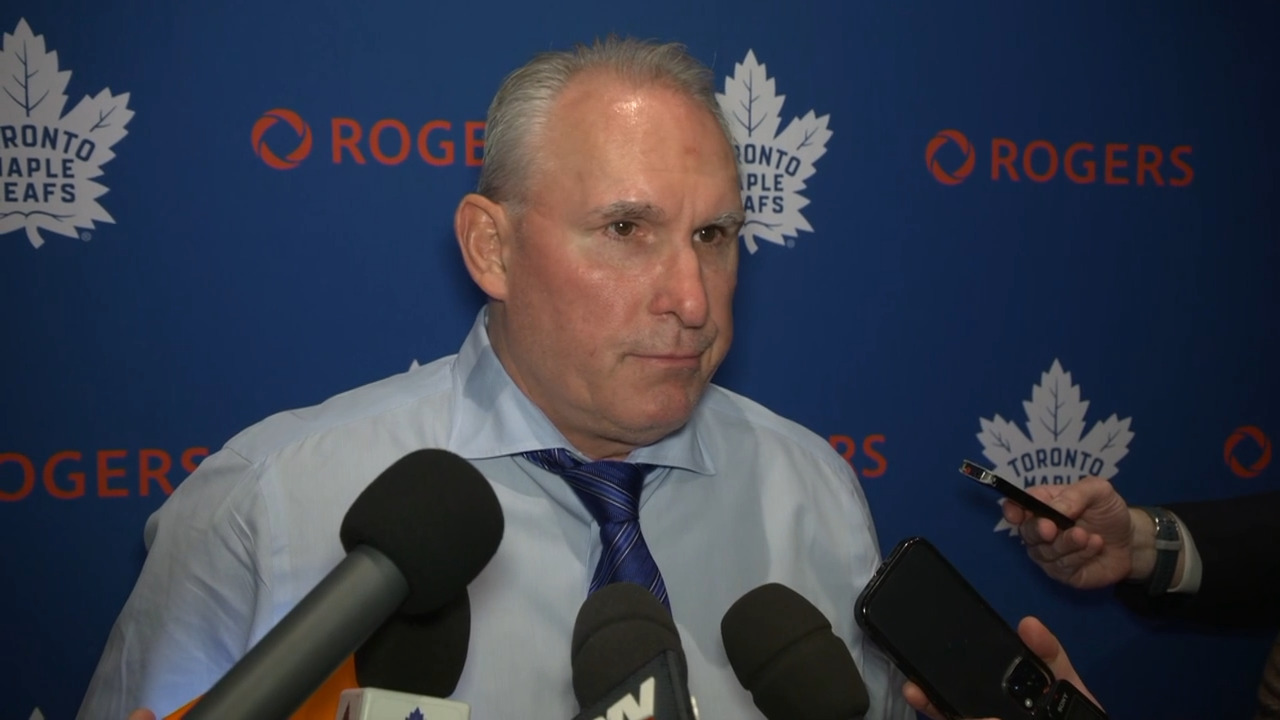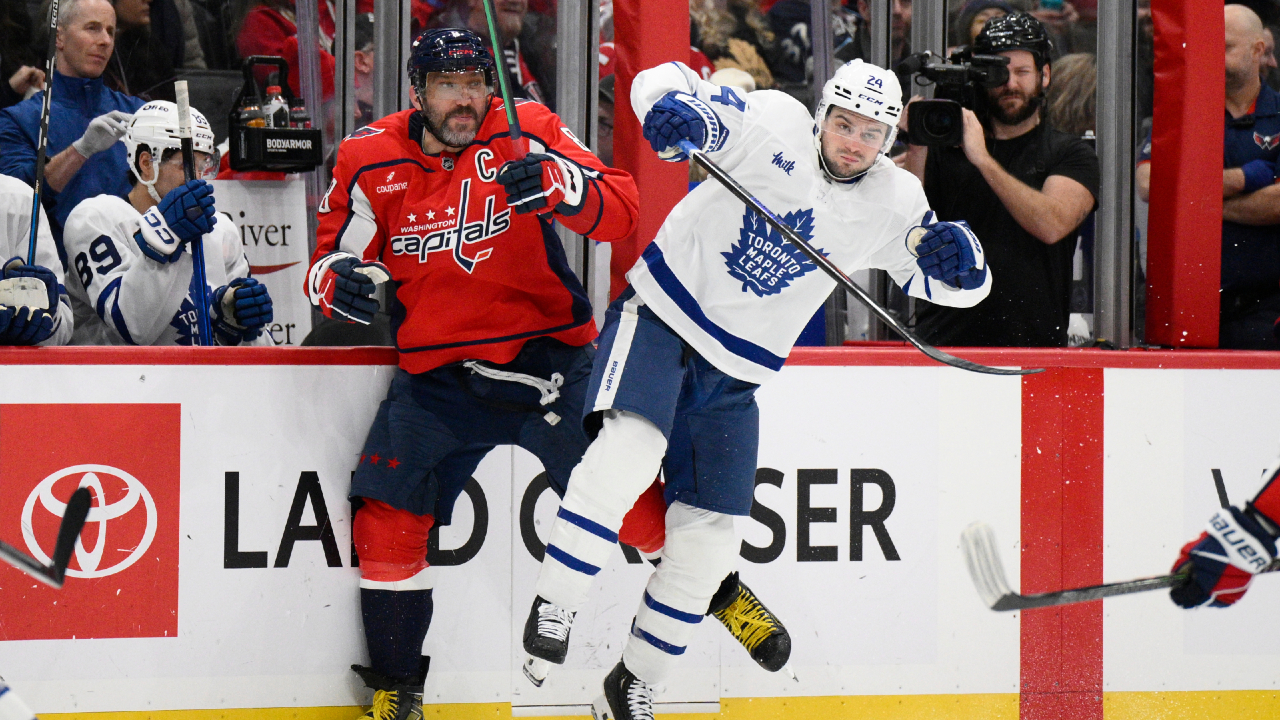
As Bo Bichette has returned to form throughout 2025, more and more attention has fallen on the possibility of getting the pending free agent under contract beyond this season — and what that contract could look like.
Bichette’s .294/.336/.463 slash line is essentially equal to his career average (.291/.333/.466) with a slightly better wRC+ (122 vs. 120), proving that 2024 is behind him, and at age 27, he is likely to have plenty of good years ahead.
The shortstop is the type of homegrown star that teams hate to lose, and his combination of youth and production will make him attractive to several clubs in the free-agent market.
As a two-time All-Star with 19 career fWAR in his back pocket, pacing for a 3.7 fWAR season, even with below-average defensive numbers on his ledger, Bichette is on his way to a sizable deal. To help understand precisely what that’ll look like, we’ve got some recent precedent to lean on.
Since the 2021-22 off-season, six different above-average starting shortstops have reached free agency and signed nine-figure contracts of six years or more. These are the best places to start when it comes to figuring out where Bichette is at.
Some notable shortstop deals signed lately that you will not see included below:
Francisco Lindor – Lindor’s contract is an extension signed before he hit free agency, but more importantly, he’s in a different class of player than Bichette.
At the time of the deal, he was a four-time All-Star who’d won two Gold Gloves, two Silver Sluggers, and ranked third in fWAR among all MLB position players since his debut at the time the extension was signed.
Bichette is an excellent player, but he’s not an inner-circle superstar like Lindor.
Carlos Correa – Correa’s initial free agency/subsequent contract were severely affected by failed physicals.
Bobby Witt Jr./Wander Franco — These deals were signed well before free agency, buying out arbitration and pre-arb years.
That leaves us with Trevor Story, Dansby Swanson, Willy Adames, Xander Bogaerts, Trea Turner, and Corey Seager.
-
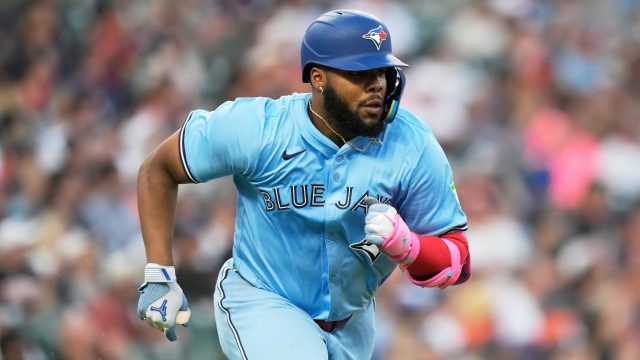
-
Watch Blue Jays vs. Rangers on Sportsnet
The American League-leading Toronto Blue Jays continue their homestand with a three-game series against the Texas Rangers. Watch Game 2 Saturday on Sportsnet and Sportsnet+ starting at 3 p.m. ET / noon PT.
Trevor Story
Contract: Six years, $140 million with a 2025 opt-out and a $25 million 2028 club option with a $5 million buyout
Contract Years: 2022-27 with a 2028 club option.
Age in First Season: 29
Career Statistics at Signing: .272/.340/.523 in 3,316 plate appearances for a 111 wRC+ with +17 OAA and 20.3 fWAR
Platform Season (2021): .251/.329/.471 in 595 plate appearances for a 98 wRC+ with -7 OAA and 2.2 fWAR
Resume Boosters: Two-time All-Star, two-time Silver Slugger
How he Compares to Bichette: On the surface, this would seem like an unfair comparison for Bichette. That’s partly because of how poorly this deal has gone for the Boston Red Sox and partly because Story was coming off a middling year before it was signed.
The case for Story as a Bichette comparable is that he’d been a true all-around star in 2018 and 2019, earning a Silver Slugger in each season while providing strong defence.
Even so, Story’s offensive inconsistency and uninspiring platform season made it difficult for him to land a truly massive contract, and that has shown up during his time in Boston.
If Bichette can’t beat this contract, he’ll have reason to be awfully disappointed with his representation.
Dansby Swanson
Contract: Seven years, $177 million
Contract Years: 2023-2029
Age in First Season: 29
Career Statistics at Signing: .255/.321/.417 in 3,387 plate appearances for a 94 wRC+ with +32 OAA and 16.1 fWAR
Platform Season (2022): 277/.329/.447 in 696 plate appearances for a 117 wRC+ with +20 OAA and 6.6 fWAR
Resume Boosters: One-time All-Star, one Gold Glove
How he Compares to Bichette: Swanson’s career before he landed with the Chicago Cubs was extraordinarily different than Bichette’s.
Instead of providing year-to-year offensive consistency, he slowly went from a poor hitter for the Atlanta Braves to an above-average one as his career progressed — providing excellent defence along the way.
His overall numbers before inking his deal don’t match Bichette’s, but in the three years before he landed it, his fWAR ranked 14th among all position players. Add in an extraordinary platform season, and it’s understandable that Swanson’s agent was able to get him such a lucrative deal.
So far in his Cubs career, Swanson’s upward offensive trajectory has stalled out, but his stellar defence has made him a solid investment.
His contract is a reasonable comparison for Bichette, who has a far better offensive track record and could argue that his offence is likely to age better than Swanson’s defence. Such a defence-oriented shortstop might not retain value deeper into his thirties, and wields a bat that wouldn’t play particularly well at other positions.
Any Swanson vs. Bichette debate is a matter of taste to some degree. The former’s glove and career trajectory were appealing; the latter’s bat is significantly better, and he has youth on his side.
Willy Adames
Contract: Seven years, $182 million
Contract Years: 2025-2031
Age in First Season: 29
Career Statistics at Signing: .248/.322/.444 in 3,610 plate appearances for a 110 wRC+ with +14 OAA and 21.5 fWAR
Platform Season (2024): .251/.331/.462 in 688 plate appearances for a 121 wRC+ with 0 OAA and 4.9 fWAR
Resume Boosters: One top-10 MVP finish (10th, 2024)
How he compares to Bichette: This is probably the sweet spot for a Bichette comp.
Not only was this contract signed last off-season, but stylistically, Adames is more similar to the Blue Jays shortstop than Swanson.
He still entered free agency with a less potent bat and more reliable glove than Bichette, but his bat was above-average, and he had three seasons with a wRC+ of 120 or better when the San Francisco Giants signed him.
Adames plays strong defence, but his worth isn’t as tied up in his glove as Swanson’s is, so he’s a little bit closer to Bichette in terms of how his value is allocated.
You could make a case for either being a better player. The offensive production Adames produces tends to vary significantly from year to year, as he has two below-average offensive seasons under his belt and could be headed for a third in 2025.
Bichette is more consistent with the bat and a better bet to hit well enough to be viable at another position later in his career. At the same time, the defensive gap is notable, and Adames might last longer at short than Bo.
The Giants’ shortstop is also a great power threat with two 30-plus home run seasons under his belt, and the 16.0 fWAR run he produced in the four years before his contract is stronger than anything Bichette has produced in a similar span.
Of the six contracts here, this one is the clear starting point of a Bichette deal.
Xander Bogaerts
Contract: 11 Years, $280 million
Contract Years: 2023-2033
Age in First Season: 30
Career Statistics at Signing: .292/.356/.459 in 5,339 plate appearances for a 118 wRC+ with -34 OAA and 34.0 fWAR
Platform Season (2022): .307/.377/.456 in 631 plate appearances for a 133 wRC+ with +5 OAA and 6.0 fWAR
Resume Boosters: Four-time All-Star, five-time Silver Slugger, one top-5 MVP Finish (2019)
How he compares to Bichette: This contract seemed a bit rich at the time and hasn’t aged particularly well for the San Diego Padres.
The good news for Bichette is that this is an example of a shortstop being richly rewarded for his offensive contributions despite wobbly defensive metrics. The Bogaerts deal extends far past the time when he’s likely to be a viable shortstop, and that’s how teams are likely to be thinking with Bichette, baking in a position change somewhere in his thirties.
This contract was signed deeper into Bogaerts’ career than Bichette is now, as the former Boston Red Sox shortstop exercised an opt-out clause from a $132 million extension he signed in 2019. That means he was a more accomplished player than Bichette, coming off a more impressive season.
Between 2018 and 2022, Bogaerts ranked 13th among all position players in fWAR and 21st among qualified hitters in wRC+. In Bichette’s five seasons immediately before free agency (2021-2025), he ranks 40th in fWAR and 62nd in wRC+. That’s a sizable gap.
Trea Turner
Contract: 11 years, $300 million
Contract Years: 2023-2033
Age in First Season: 30
Career Statistics at Signing: .302/.355/.487 in 3,737 plate appearances for a 124 wRC+ with +11 OAA and 32.9 fWAR
Platform Season (2022): .298/.343/.466 in 708 plate appearances for a 128 wRC+ with 0 OAA and 6.4 fWAR
Resume Boosters: Two-time All-Star, one Silver Slugger, one top-5 MVP finish (2021). World Series champion (2019)
How he compares to Bichette: Much like Lindor above, Turner is in a bit of a different category than Bichette.
Both his 2021 and 2022 seasons, before his contract was signed, were significantly better than anything Toronto’s shortstop has produced yet. He’s a prototypical leadoff man, and he comes with a notable playoff pedigree.
He is a couple of years older than Bo, and his career offensive numbers aren’t particularly dissimilar, while he lacks the sterling defensive reputation of many of the others on the list.
That said, Turner is one of the few players whose baserunning truly moves the needle. Since his debut, he has led the majors in stolen bases (305) and BsR (+64.4), which has been enough to take him from a great offence-first starting shortstop to an all-around star.
Corey Seager
Contract: 10 Years, $325 million
Contract Years: 2022-2031
Age in First Season: 28
Career Statistics at Signing: .297/.367/.504 in 2,710 plate appearances for a 132 wRC+ with -17 OAA and 21.9 fWAR
Platform Season (2021): .306/.394/.521 in 409 plate appearances for a 146 wRC+ with -5 OAA and 3.8 fWAR
Resume Boosters: Two-time All-Star, one Silver Slugger, World Series champion and MVP (2020), Rookie of the Year (2016), one top-3 MVP finish (2016)
How he compares to Bichette: Seager is also in a different tier to Bichette overall, particularly when some of his playoff achievements — even before joining the Texas Rangers — are considered.
At the same time, he reached free agency at the same age as Bichette with a fairly similar career fWAR number. His deal represents an example of teams’ willingness to pay for youth and production even if there are other blemishes.
In Seager’s case, durability was a significant concern, and his defensive metrics weren’t particularly impressive. The Rangers bet on a bat that could be spectacular and a glove that would be serviceable. They’ve won that bet handily — particularly as Seager has found another gear with his power, producing three straight 30-plus home run seasons — and other teams could take notice of the model.
Still, even before Seager joined Texas, he was showing signs of his offensive growth, and he projected to be a middle-of-the-lineup force in a way that Bichette doesn’t at this point in his career.
The Elephant in the Room: Second Base
So far, we’ve alluded to concerns about Bichette defensively, without elaborating on them much. Bichette consistently grades out as a below-average defender, which has generally been fine because of his excellent offensive production.
However, the extent of his negative defensive value might be disqualifying for some teams. A look at his Statcast percentiles for Outs Above Average and Sprint Speed throws up red flags for his capacity to handle the most athletically demanding position in the sport long term:
|
Season |
OAA Percentile |
Sprint Speed Percentile |
|
2019 |
12 |
83 |
|
2020 |
74 |
71 |
|
2021 |
8 |
75 |
|
2022 |
6 |
54 |
|
2023 |
19 |
43 |
|
2024 |
70 |
49 |
|
2025 |
2 |
22 |
Bichette has had the odd season with better results, but the defensive grades are consistently poor, and his speed has declined significantly.
Add in 30th percentile arm strength, and some teams likely see him as a second baseman today, not at some later point over a lengthy contract. That’s not great news for Bichette, considering how few players at the position make big money. Only Marcus Semien, Jose Altuve, and Javier Báez are on contracts with an average annual value north of $20 million, which is a number Bichette will be hoping to blow past.
The contract at second that makes the most sense as a comparable for Bichette is Báez’s deal (six years, $140 million with an opt-out), which is essentially the same as Story’s. Getting something in that ballpark would be a disappointing result for Bichette, though. Particularly since he’s a year younger than those two players were when their deals were signed, and both were inked before the 2022 season.
Chances are, the question of Bichette’s defensive viability at short will limit the breadth of his market rather than depressing the dollar value of his contract directly. Bichette and his representation will go to market asking for a deal befitting of a young starting shortstop, and clubs that think he’s better suited to another position immediately won’t make serious offers unless that stance shifts.
The Verdict
Worries about Bichette’s defensive production make him a more complicated free-agent case than most shortstops who’ve established themselves as above-average starters and become available before their 28th birthdays.
Looking at offensive numbers alone would give you the impression that Bichette is likely to score a contract similar to some of MLB’s biggest names, but the best recent comparable is probably Adames, who has never appeared in an All-Star game or won a major award.
Bichette’s youth is a big deal because he has one more year of his prime to put on offer. There is also inflation — and agents’ desire to outdo each other — to consider.
With those two factors in mind, we can add $1 million in AAV and one year to the Adames deal and find a reasonable starting point, giving us an eight-year, $216 million contract.
Teams that are the most bearish on Bichette’s defensive abilities wouldn’t even contemplate a deal like that, but it only takes one club to be intoxicated by the idea of him as a long-term lineup fixture.


